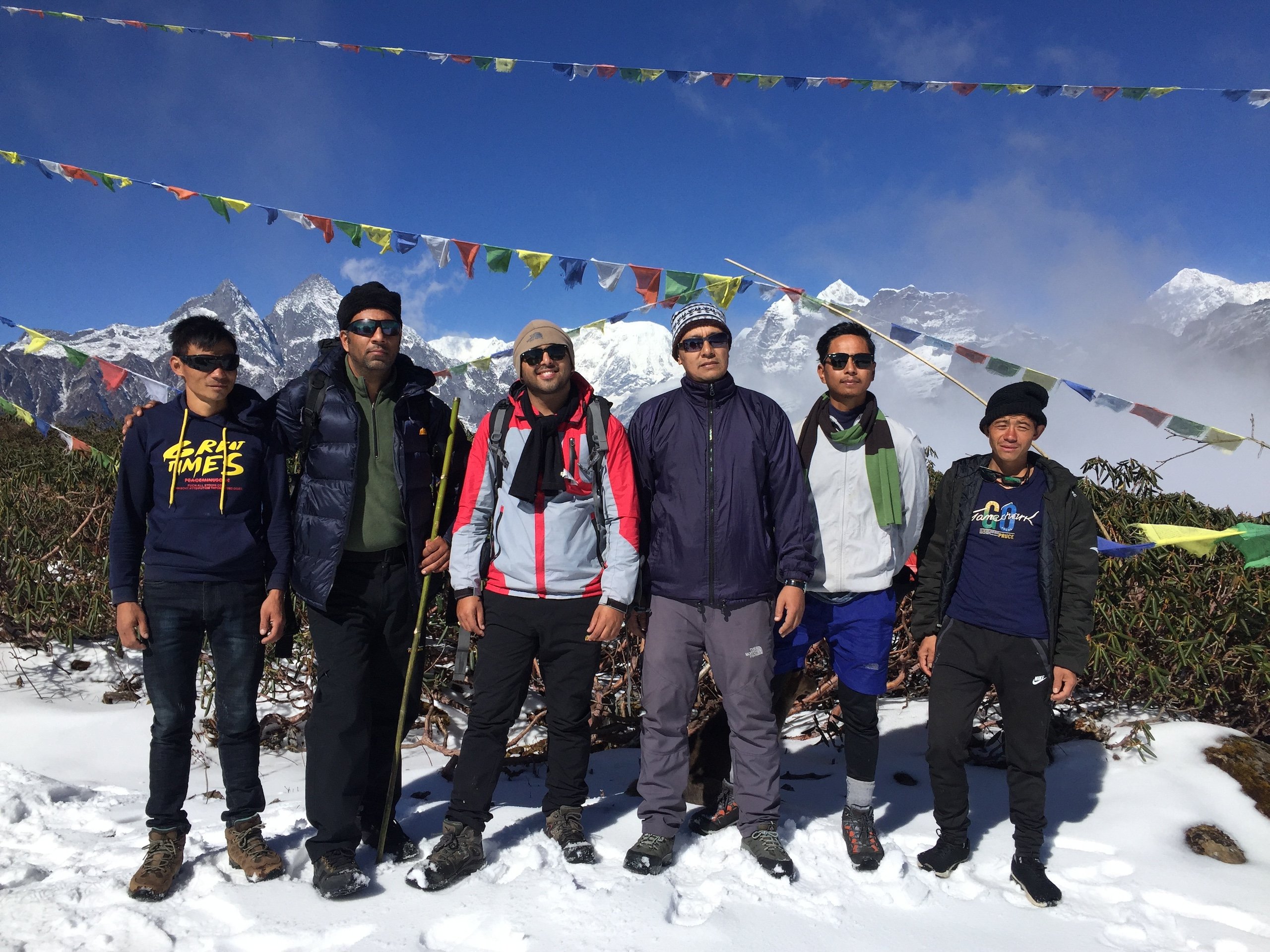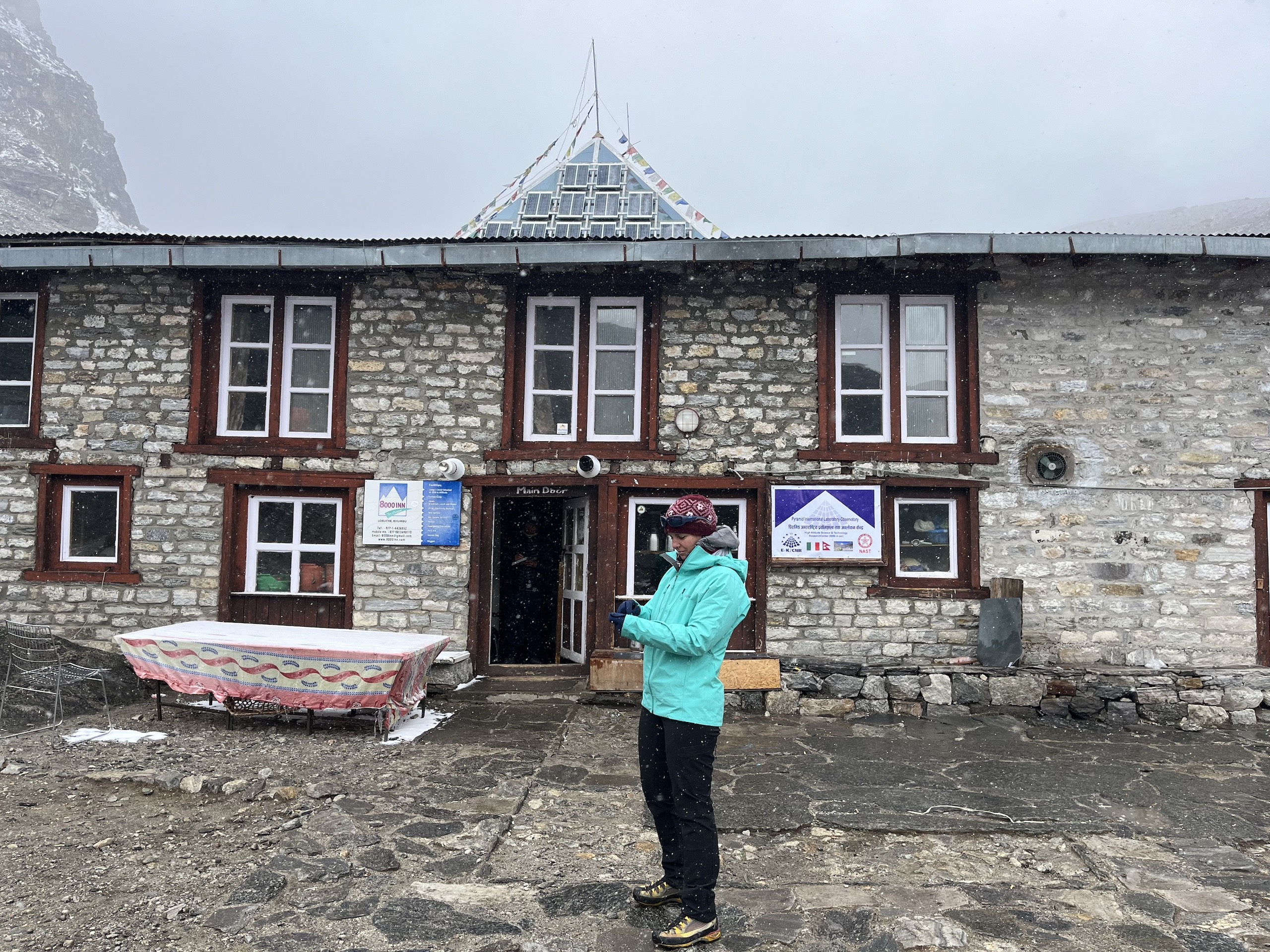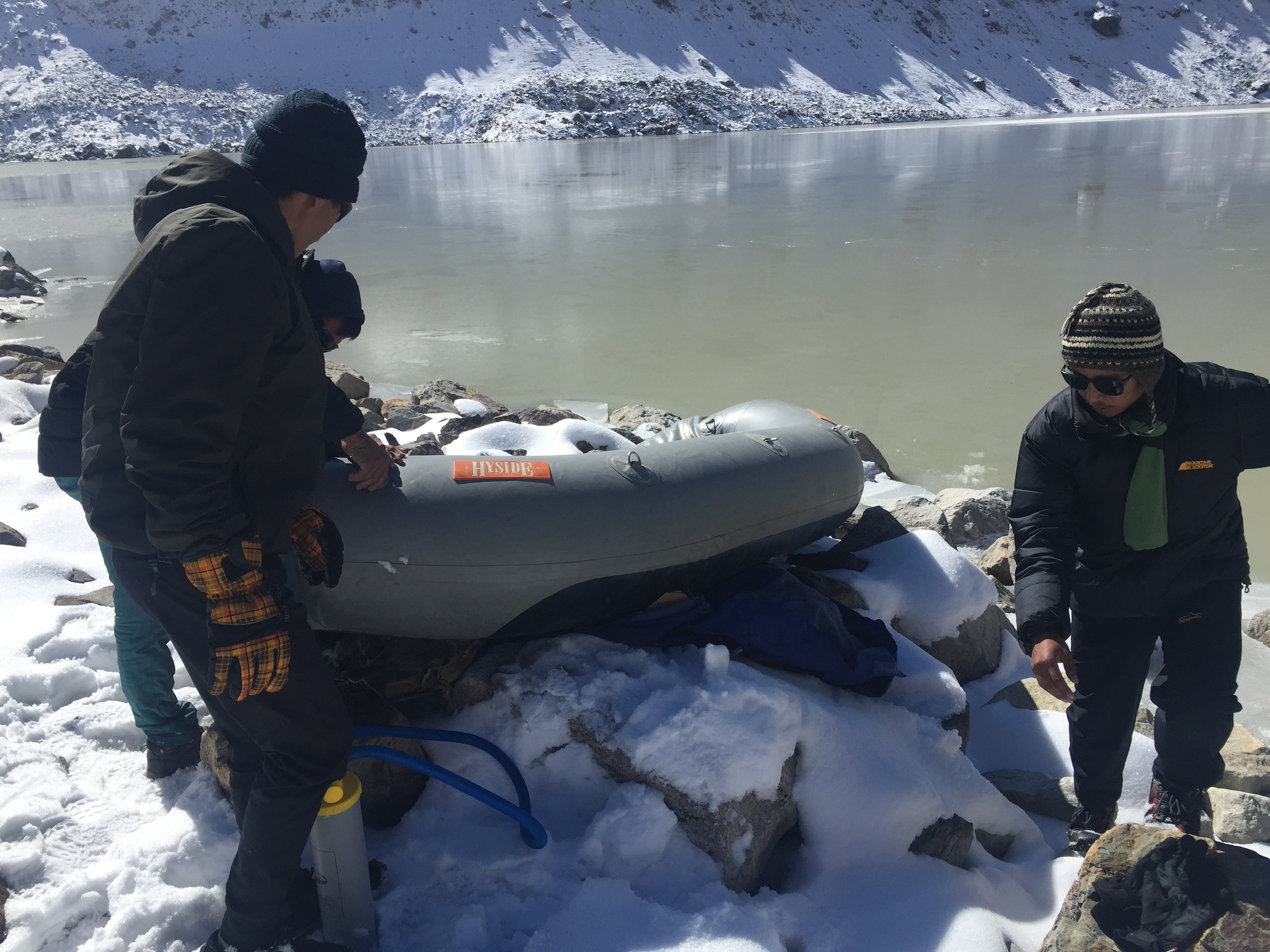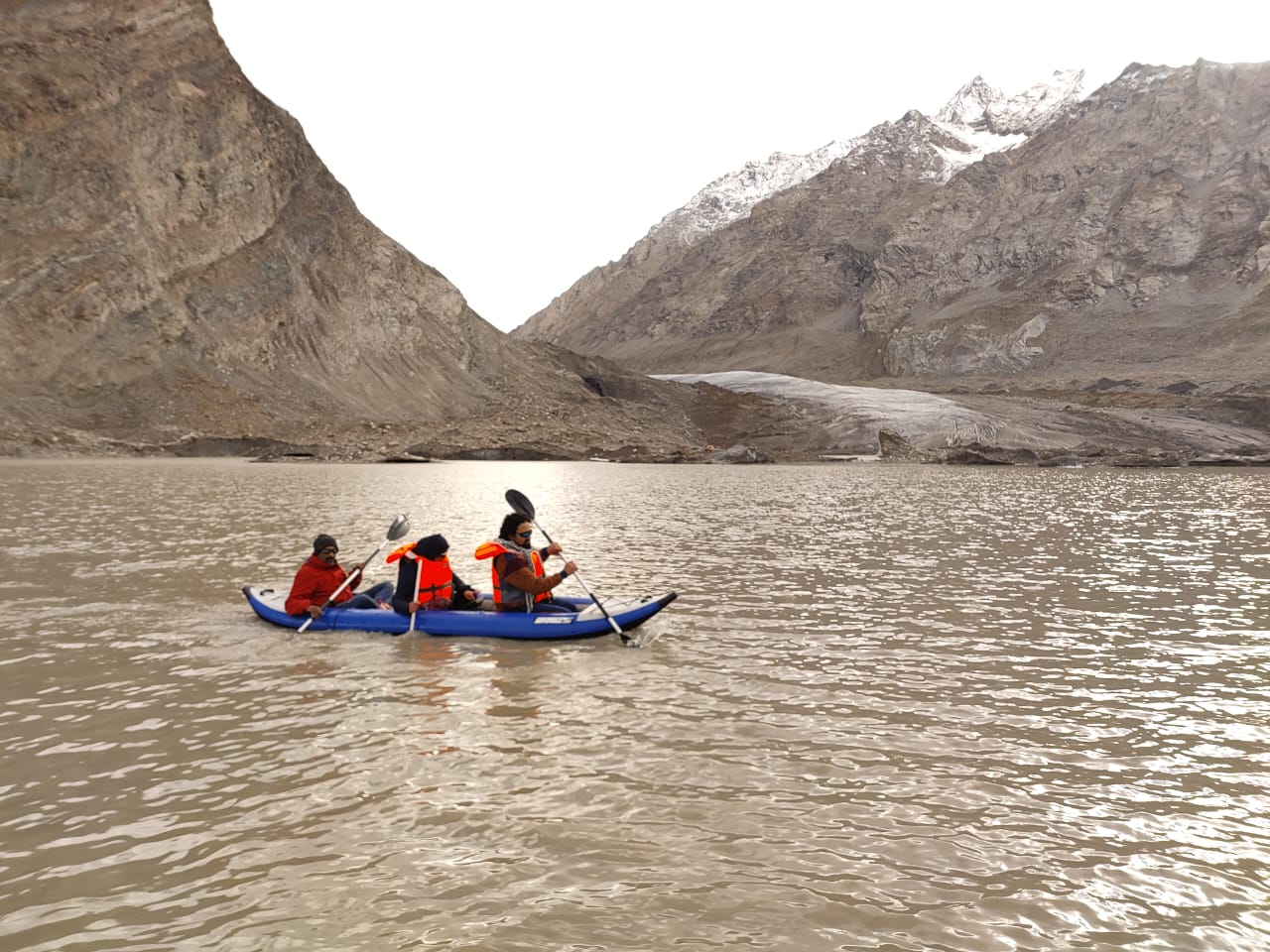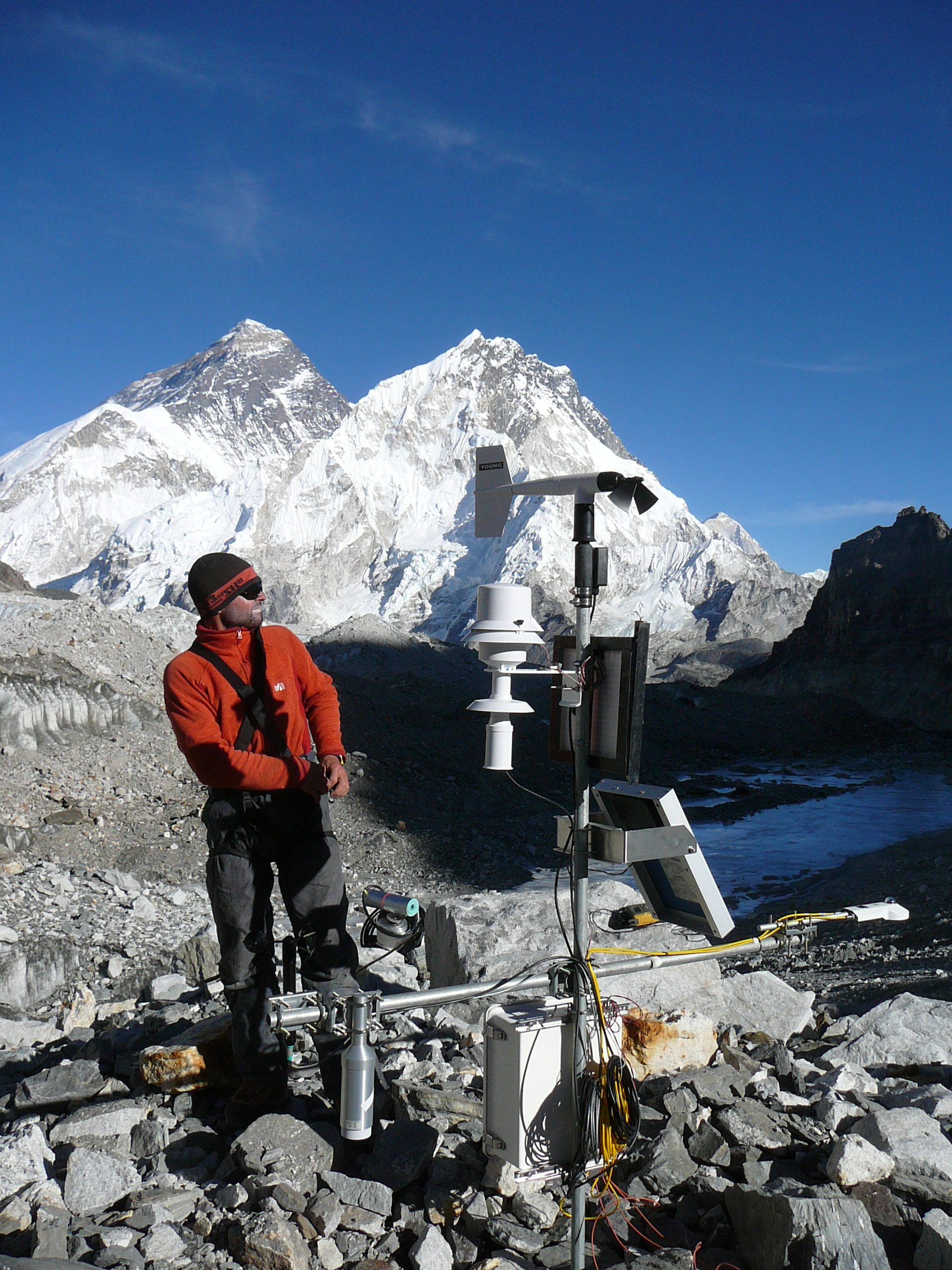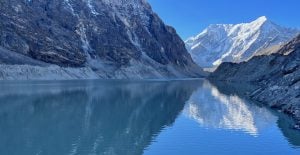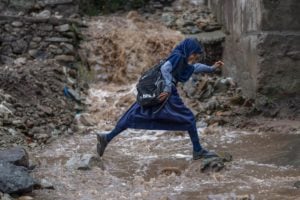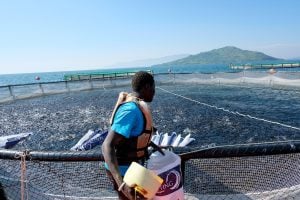One late afternoon in May 2024, as light snowfall descended, glaciologist Ines Dussaillant was relaxing at the Pyramid International Laboratory’s lodge.
Tucked in a small valley at an altitude of 5,050 metres, near Mount Everest’s base camp, the facility is a unique centre for high-altitude scientific research. Dussaillant had just returned from installing a sensor that monitors the Mera Glacier, located in eastern Nepal, as part of an ongoing study that began in 2007.
This glacier has been continuously monitored by scientists from the French Institute of Research and Development (IRD). Dussaillant, who works at the World Glacier Monitoring Service, is collaborating with IRD to enhance understanding of glacial dynamics.
Dussaillant described the Mera Glacier as one of the main “reference glaciers” in the Himalayas: “Monitoring of this glacier can tell [us] not only what is happening with [the] Mera, but we can extrapolate what is happening here to the surrounding glaciers … so, it is super important to have annual measurements and continuous monitoring of this glacier.” The sensor, originally installed in 2022, had malfunctioned and was sent back to France for repairs last year, before Dussaillant reinstalled it.
The sensor “will allow us to measure [one of] the biggest unknowns,” Dussaillant said: precipitation at different altitudes – and “allow us to analyse how glaciers [in this region] are behaving.”
The importance of such data extends beyond Nepal, impacting the entire Himalayan region where harsh terrain and complex geopolitics complicate the in-situ data collection. Shakil Romshoo, a Kashmir-based glaciologist, remote sensing and geographic information system (GIS) specialist told Dialogue Earth that, of the almost 33,000 glaciers in the Indian Himalayas, only about 15 receive detailed glaciological field measurements.
The need to ascend and ascertain
Advances in computer modelling and satellite data have diverted focus from traditional field observations, with Dussaillant stressing the critical need for these measurements to complement the insights provided by new technologies. Integrating in-situ data with satellite observations was vital, she said, as satellites help track long-term differences, wheras annual field measurements provide detailed insights into yearly variations.
Romshoo agreed. “Field glaciology remains crucial as it helps to validate and ground-truth remote sensing findings [from satellites],” he explained. He added that field data were imperative for refining and calibrating computer simulation models used to predict glaciological processes.
According to Wei Yang, a glaciologist from the Institute of Tibetan Plateau Research, satellite data also has its limitations. Capturing meteorological conditions and sub-glacial phenomena at extreme elevations, which are critical for understanding climate change impacts and the melting of the cryosphere – the frozen water part of the Earth’s system – are only possible with fieldwork, he said.
That does not mean all glaciers have to be monitored, Dussaillant told Dialogue Earth, but “we need at least one long-term series of annual measurements in each of different micro-climatic Himalayan regions to be able to really understand what is happening.” Wei said this should encompass a variety of glacier types, including those that are debris-free, debris-covered and those that terminate in lakes, located in both warm, humid conditions and cold, arid areas.
Himalayan glaciers are rapidly retreating due to climate change, and have receded 65% faster in the 2010s compared to the previous decade, posing significant threats to water security and regional stability. According to ICIMOD, there are currently over 2,070 glacial lakes in Nepal, mostly formed during the second half of the 20th century due to increasing temperatures, and 21 have been identified as potentially dangerous glacial lakes.
Braving harsh conditions to unlock glacier secrets
Sudeep Thakuri, dean of Faculty of Science and Technology at Nepal’s Mid-West University, explained the dangers of researching glacial lakes, particularly those identified as hazardous. In 2019, while surveying the Lower Barun glacial Lake in eastern Nepal – one of the 21 identified as potentially dangerous – Thakuri and his team experienced a sudden weather shift.
“The weather was sunny and we were feeling comfortable, surveying the lake beneath a calm and cloud-free sky at around 12:30,” he told Dialogue Earth. “Moments later, the weather suddenly changed covering the lake area in thick, dark fog and the temperature dropped very rapidly.”
The lake’s surface began to churn with waves and ice sheets started appearing, likely from disturbances at the upper glacier’s terminus, he said, and, “It was chillingly cold … making it hard to hold things [with our near-frozen hands].” Despite these sudden temperature changes, which could lead to hypothermia or worse, his team managed to gather their intended data without injury.
Irfan Rashid, a climate scientist at Kashmir University’s Department of Geoinformatics, said that the biggest challenge for studying glaciers in the Himalayas is “the extremely difficult and relatively inaccessible terrain,” especially glacial surfaces, which have dangerous crevasses. He said surveying these areas can be life-threatening due to the ice-cold waters and unstable hanging ice that can trigger lethal waves, capable of capsizing boats.
Wildlife poses additional risks in these remote areas. Rashid shared an incident from 2016, while his team was camped near Machoi Glacier: “We couldn’t sleep that night as the bears smelled [the] eatables that we were carrying,” Rashid recalled. Despite efforts to scare them off with firecrackers and loud noises, they lingered for hours.
Human challenges and achievements
Patrick Wagnon, a glaciologist at the French Institute of Research and Development, said finding the right people and institutions for collaboration when monitoring Himalayan glaciers, was for him, “the most difficult challenge”. His work began with Chhota Shigri Glacier in India in 2002 and then with Mera Glacier in Nepal in 2007.
“We had to understand the local organisations, establish contacts, share cultures and assess the local community needs,” Wagnon told Dialogue Earth. The process required significant time, energy and resources. Reflecting on his more than two decades of experience on Himalayan glaciers, he said that he has “learned more from local communities” than he “could teach”.
Wagnon’s greatest satisfaction comes from seeing local talent flourish. Referencing Arbindra Khadka, a Nepali student involved in the Mera Glacier project, he describes him as becoming “a true output” of their collaborative efforts.
However, understanding local challenges, building trust among locals and training scientists “takes more time and energy than repeating annual field measurements even at 6,300 metres above sea level.”
Wagnon added: “The idea of our monitoring programmes is to transfer the responsibilities of our projects to local scientists.”
This story was supported in part by Himalayan Climate Boot Camp 2024
